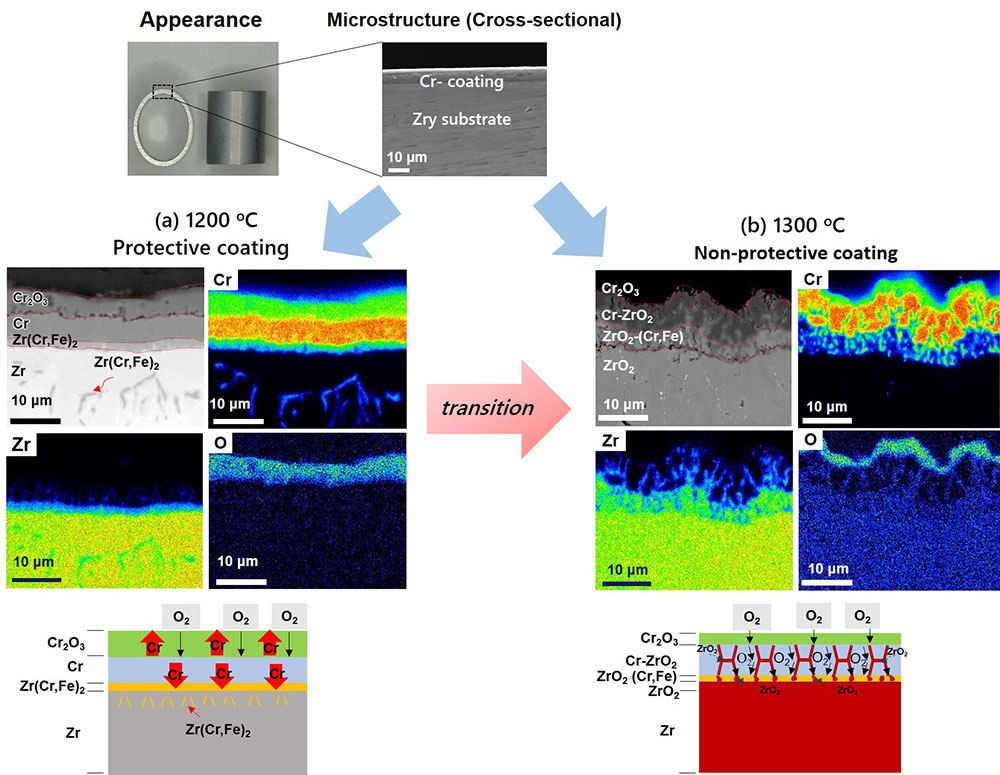Publication Date: October 10, 2024
Access counts:0
Delayed Overheating of the Reactor Core to Prevent Progression to a Severe Accident
-High-Temperature Oxidation Resistance of New Fuel Cladding Materials-

Fig. 1 Microstructural changes in Cr-coated Zry cladding under accident conditions
(a) A "protective coating" at 1200 ℃ to (b) a "non-protective coating" at 1300 ℃.
Cr-coated zirconium alloy (Zry) cladding, widely known as candidate cladding for accident-tolerant fuels because of their promising oxidation resistance compared with Zry cladding. To utilize these candidates as new cladding materials for light-water reactors, screening them under severe accident conditions is necessary. According to the Japan regulatory criteria, the peak Zry cladding temperature should not exceed 1200 ℃, which is determined from the integral loss-of-coolant accident (LOCA) tests and oxidations tests.
To simulate severe accident conditions, the Cr-coated Zry cladding must be subjected to high-temperature steam oxidation, particularly to confirm its behavior up to 1200 ℃ as the condition of design basis accidents. However, many questions remain unanswered about the oxidation behavior of Cr-coated Zry cladding materials for temperatures higher than 1200 ℃ in beyond-design basis accidents.
This study investigated the mechanism and phenomena of the Cr-coated Zry cladding under high-temperature steam oxidation, mainly above 1200 ℃. The transition from a "protective coating" to a "non-protective coating" was defined.
The cross-sectional morphologies of the Cr-coated Zry cladding after the oxidation tests are shown in Figure 1 (a, b). At 1300 ℃, when a ZrO2 layer was present on the outer surface region, the coating was no longer protective because of O diffusion through the Zr precipitated within the Cr coating. The tests indicated that the Cr coating cannot protect the Zr cladding at 1300 ℃ but can protect the Zry cladding from oxidation at 1200 ℃.
This study elucidated the mechanism and phenomena of the Cr-coated Zry cladding when exposed to high-temperature steam oxidation. Furthermore, this study will help understand the results of large-scale test data of simulated LOCA and severe accident phenomena.
This study is part of a collaborative research project with Mitsubishi Heavy Industries, Ltd.
If you have any comments or feedback about this page, please click the button to share your thoughts with us.
